Each day, more and more people are interested in exploring kalimba. Furthermore, there are so many reasons why this is a great instrument for beginners. But while most beginners follow the main theme of the song only, you can also try out something new.
The unique design and note layout will allow you to easily play chords. This is one of the main differences between beginners and more experienced players, and by playing appropriate chords, you’ll be able to make every song sound a bit richer.
To play chords on the kalimba, you will usually play three adjacent notes. It’s as simple as that. However, there are several things that you need to consider and know before you start practicing and experimenting with chords.
What Is A Chord
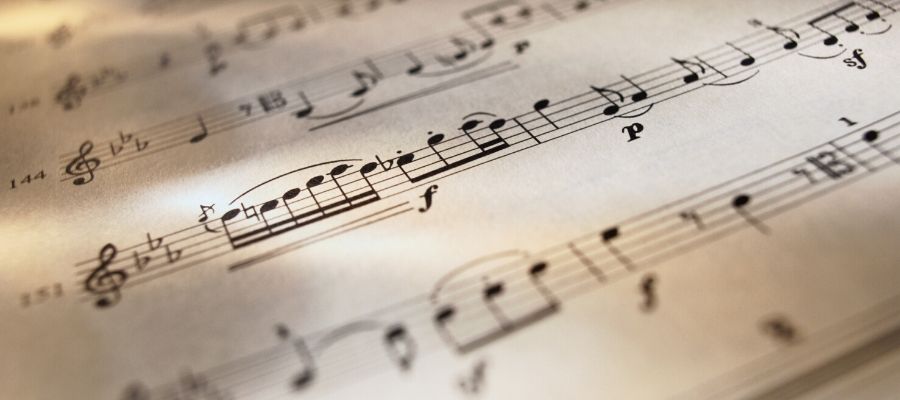
Before we go any further, you need to know what a chord actually is. A chord is a combination of three or more notes. To get the chord, you will need to play these notes simultaneously, as if it was a single note.
Now, there are so many different types of chords available, and not many of them are playable on the kalimba. The reason for this is that the instrument offers only single notes without sharps or flats, at least if we talk about a standard C major kalimba.
I won’t go into details about music theory, mainly because you won’t be able to play most of these chords on the kalimba, but let’s take a look at how chords are built
One of the most common types of chords is triads. These offer just three notes, and when you play them, you will get one of the four types of triads. There is a major, minor, augmented, and diminished.
Here, we will focus only on major and minor ones, since you probably won’t be needing the other two.
Major chords have a root, major third, and perfect fifth. For example, in C major scale, the root is a C note, the major third is the third note in the scale or E, and a perfect fifth is G. When you combine C, E, and G, you get a major triad or a major chord.
Minors, on the other hand, use a root, minor third, and a perfect fifth. If we apply this to the C major scale, we will get C, Eb, and G. As you can see, the only difference between major and minor chords is half a step.
Instead of E, we will have an E flat in the minor chord.
Notes On The Kalimba
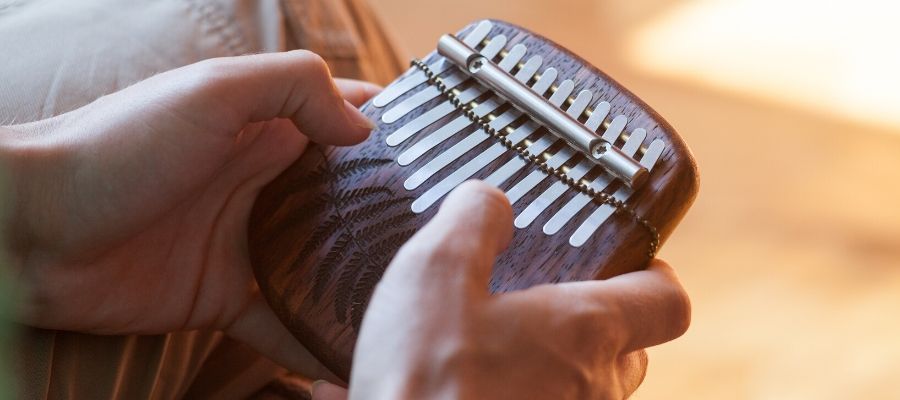
A standard kalimba has seventeen keys, and they are tuned to the C major scale. If you don’t know already, notes in this scale are C, D, E, F, G, A, B, and C. Instead of adding more notes, kalimba just repeats this scale until there are no tines.
This means that you will be able to play neither flats nor sharps on the regular kalimba. You can, however, tune the instrument to a different key, or change the scale, but the distance between each note will remain the same.
In C major scale, we have half a step difference only between E and F, and B and C. So, if you follow the pattern, there will be a full step, full, half, full, full, full, half.
This rule will apply to any other major scale, and in the key of G, you would get the following notes G, A, B, C, D, E, F#, and G.
Even though G kalimba has one sharp, you still won’t be able to play it any differently than the C major one.
But regardless of the key your instrument is in, the notes won’t follow the progression from left to right like on a regular piano.
Instead, the notes are alternating from left to right. Usually, the middle tine is the root note, and the second and third notes in the scale are located right and left respectively.
How Can You Play Chords On The Kalimba

Now that we covered the basics of music theory or at least some elements, you’ll be able to form chords on the kalimba.
Since kalimba has a unique note layout, and as I mentioned, notes are alternating right and left of the root, this will give you an easy way to play the chords.
If we take a look at the two notes located right of the root, these notes are E and G on the C kalimba. This means that the longest note and two tines on the right are the first, third, and fifth in the scale or C major triad.
This unique layout will allow you to easily play chords by plucking three adjacent tines at the same time. On other instruments, you would need to worry about finding these three notes, but here, it’s quite easy to find them.
Since the lowest note is in the middle, all you have to do is swipe in either left or right direction to get a chord. The direction of swiping will always be from the longest to the shortest tine.
On the left side of the instrument, you will swipe from right to left, and on the right side, you will swipe from left to right to get a chord.
While you can play these notes by plucking them at the same time, the effect will be a lot better if you use a swiping technique.
Chord Families Of The C Major

Now, there is one more thing you need to remember to know which chords are available on your kalimba, and that’s chord families.
As I already explained, the notes of the C major scale are C, D, E, F, G, A, B, and C. But if you want to play chords instead of single notes, you won’t play all major ones.
This is where the chord family steps in. In the major scale, the chord family will start from the major chord. The pattern is major, minor, minor, major, major, minor, and diminished.
In the example of C major, you would have the following chords. C major, D minor, E minor, F major, G major, A minor, and B diminished. And these are the chords you can play on your C kalimba.
Even if your kalimba is tuned to a different key, you will still follow the same pattern from the chord family to learn which chords are available to you. Of course, if your kalimba is not in the major key, you will have a different pattern.
Where Are The Chords On The Kalimba
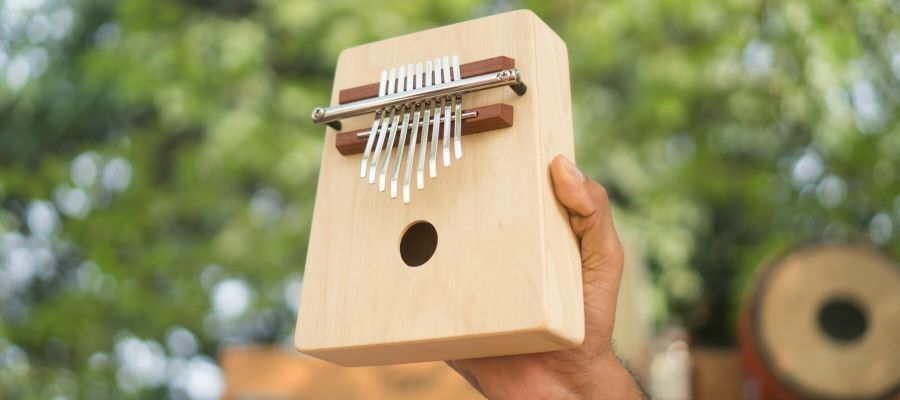
Now that you know how to play these chords, you will need to understand how to find the one you need. Don’t worry, the whole process is easy, and you’ll be able to play chords in just a few minutes.
Like I said before, the longest tine on the C kalimba is the root or C. All you need to do is swipe right from C and you will get a C major note.
But if you do the same thing starting from the first note on the right of C, you will get an E minor chord. But if you start from the, let’s say, A note, by swiping, you will get an A minor.
Since the scale is repeating, you can find each note on both the left and right sides, and all you need to remember is to swipe from the lowest to the highest note.
The most popular tunings for the kalimba are C major and G major.
To summarize, in C major scale, you’ll be able to play C major, D minor, E minor, F major, G major, A minor, and B diminished.
If we take this same pattern and apply it to G major scale, the available chords are G major, A minor, B minor, C major, D major, E minor, and F# diminished.
How To Learn Songs

The first thing you need to understand is that each major scale has a natural minor. This means that this minor scale is relative to the major, and it will have the exact same notes. The only difference between the two is the starting point.
The natural scale of the C major is A minor. The notes in the A minor scale are A, B, C, D, E, F, G, and A. But the family of chords is also identical to the major scale.
In A minor scale, the first chord or triad is A minor, and then B diminished, C major, D minor, E minor, F major, and G major.
This means that you can play any song in A minor on your C major kalimba. Similarly, E minor is a natural minor for the G major scale and the same rules and patterns apply to this as well.
So if the song is not in either A minor or C major, you can always move it to better fit your needs. It might be complicated at the beginning, but all you need to remember is the original scale.
Once you understand how the scale works, all you need to do is to move each note to fit one of these two scales. This way, you’ll be able to play a lot more songs compared to sticking only to ones written in C major.
Adding More Notes

While playing three notes only is great, you can always add more to make the song sound richer and fuller.
Since you will use either your right or left thumb for swiping, you will have your other hand free. If you are a beginner with the kalimba, players will usually use their left thumb for everything left of the longest tine (or the lowest note), and right thumb for the right side of the instrument.
This way, you will play a C major chord with your right thumb which will leave your left thumb free to add more notes.
You should start by adding another C note to the equation. This note will act as a melody note, and it will make your chords sound richer. This is the same logic used on playing the guitar, where you will repeat the note of the triad to get a more beautiful chord.
For this example, all you need to do is use your left thumb to pluck the C note on the left side of the kalimba.
You will use the same logic to play all other chords, where you will repeat the root of the chord only with your other thumb.
The chords will remain the same and they will follow the pattern I mentioned before.
It’s OK To Keep It Simple
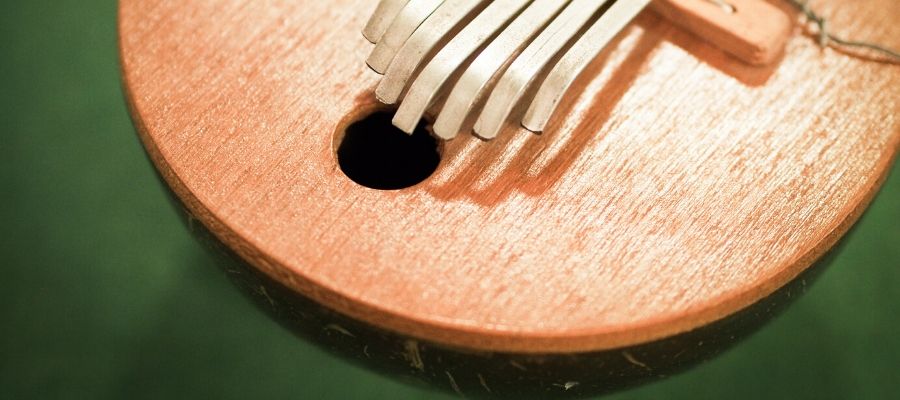
If you are a beginner you don’t need to focus too much on understanding how chords work. All you need to remember is that you will form a chord by playing the specific note and two adjacent (shorter) tines.
You can always memorize whether the minor or major is available for your scale and go on from there. If you are playing around with the chords, you can always check the “circle of fifths” which is a great way to understand the family of chords.
In music theory, capital letters are for major chords, and lower cases are for minor chords. Finally, diminished is usually marked with a circle in the superscript.
Using this handy little tool, you can just write the numbers or the pattern of the song, and move the key to the one you have on your kalimba, and use the pattern to transform the song to your key.
Chromatic Kalimbas

One of the more exciting additions to the world of kalimbas is chromatic instruments. These instruments are based on the chromatic scale, which means that you’ll get every possible note.
Chromatic kalimbas often have two sets of tines, where the one on the front of the instrument is similar to any other kalimba.
However, on the backside, there is another set of tines that are reserved for sharps and flats. To play this kalimba, you will use your thumbs for the front set, and your index fingers for the back tines.
Naturally, this is a bit more complex, and you will need a lot of practice to perfect the coordination of your fingers.
But on a chromatic kalimba, you’ll be able to play anything you like, and this includes chords.
There is a chance that you’ll have to learn more about music theory to understand how chords work since you will need to combine both your front and back tines to create some of them.
Basic chords will work the same way as on the regular kalimba, but if you need a sharp or a flat, you’ll just add it to the chord you need.
Chromatic kalimbas are usually tuned to the G major, and they are alto kalimbas. This means that the front row will have fifteen keys instead of seventeen as on the treble kalimbas.
For beginners, a chromatic kalimba might be too much, and it is probably best to stick to the regular one until you’re more comfortable experimenting with this instrument.
Summary
Playing chords on the kalimba can be quite simple. Since the layout of the thumb piano is zigzagging from right to left, this means that every third note is next to each other. This makes it perfect for playing chords.
All you have to do is find a note, and play it simultaneously with two adjacent shorter tines. This will give you a chord.
Now, the main question is whether that chord is major or minor. If you have a C major kalimba, you can play the following chords only – C major, D minor, E minor, F major, G major, A minor, and B diminished.
To play any other type of chords, you will need to either retune your instrument or get a new one. It is not possible to play a chord like C minor, for example, without any modifications to the instrument.
You can, however, check out chromatic kalimbas that offer a chance to get all tones including sharps or flats.
But playing this instrument is a lot more difficult and you should first get comfortable with playing regular kalimba before you move on to something different.
If you found this article useful you may want to save this pin below to your Kalimba board
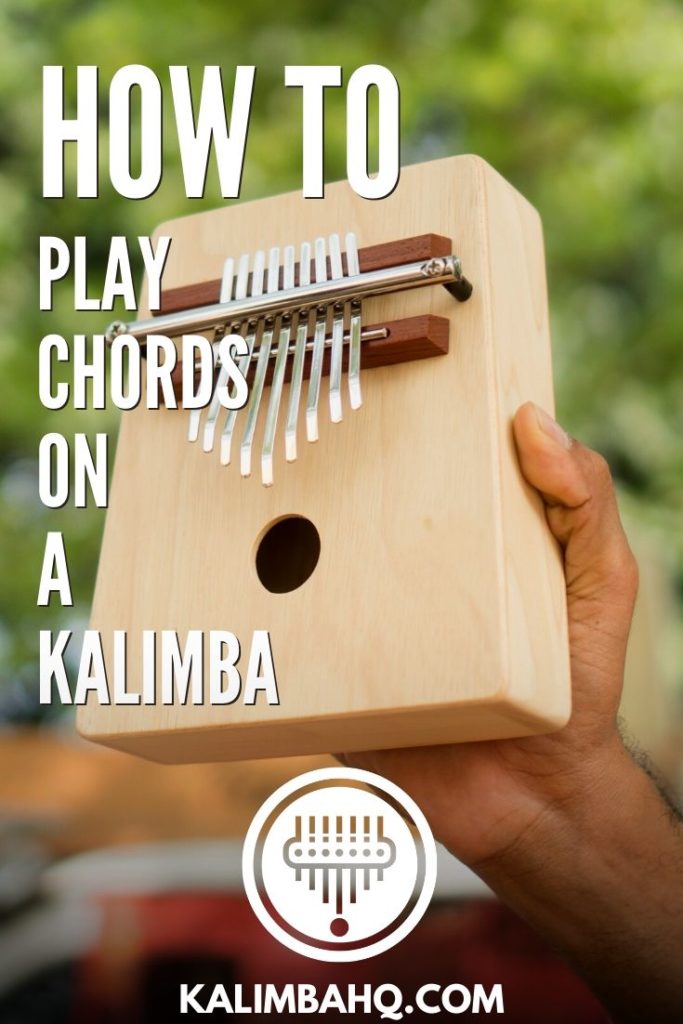
Recent Posts
How To Play “How Deep Is Your Love” On Kalimba - Tabs Included
There are so many incredible songs you can learn to play on Kalimba, but if you are a beginner, the best idea would be to go easy. But finding a perfect song to learn is never easy. Fortunately, this...
Jingle Bells is among the most commonly sung (and the most well-known) songs in the world. Everyone heard of this one, and it is one of the go-to songs for beginner musicians. Regardless of...

